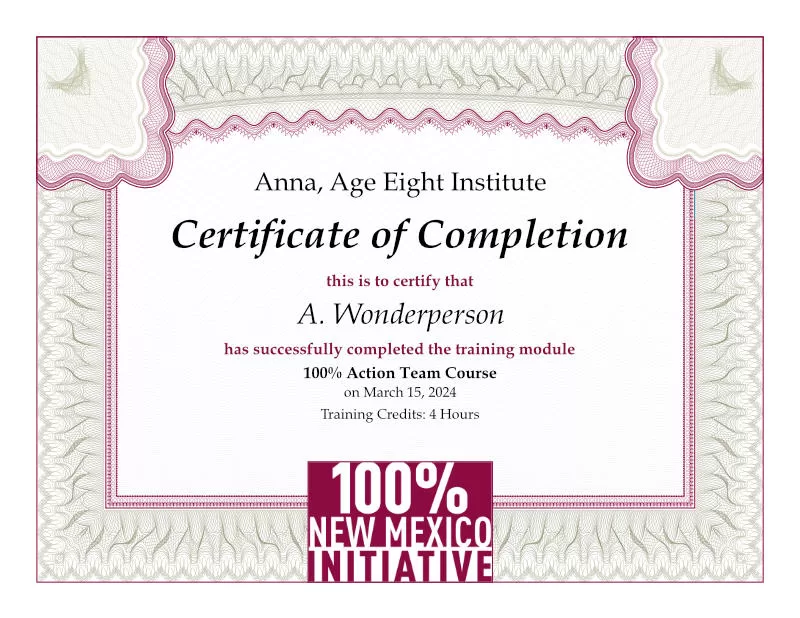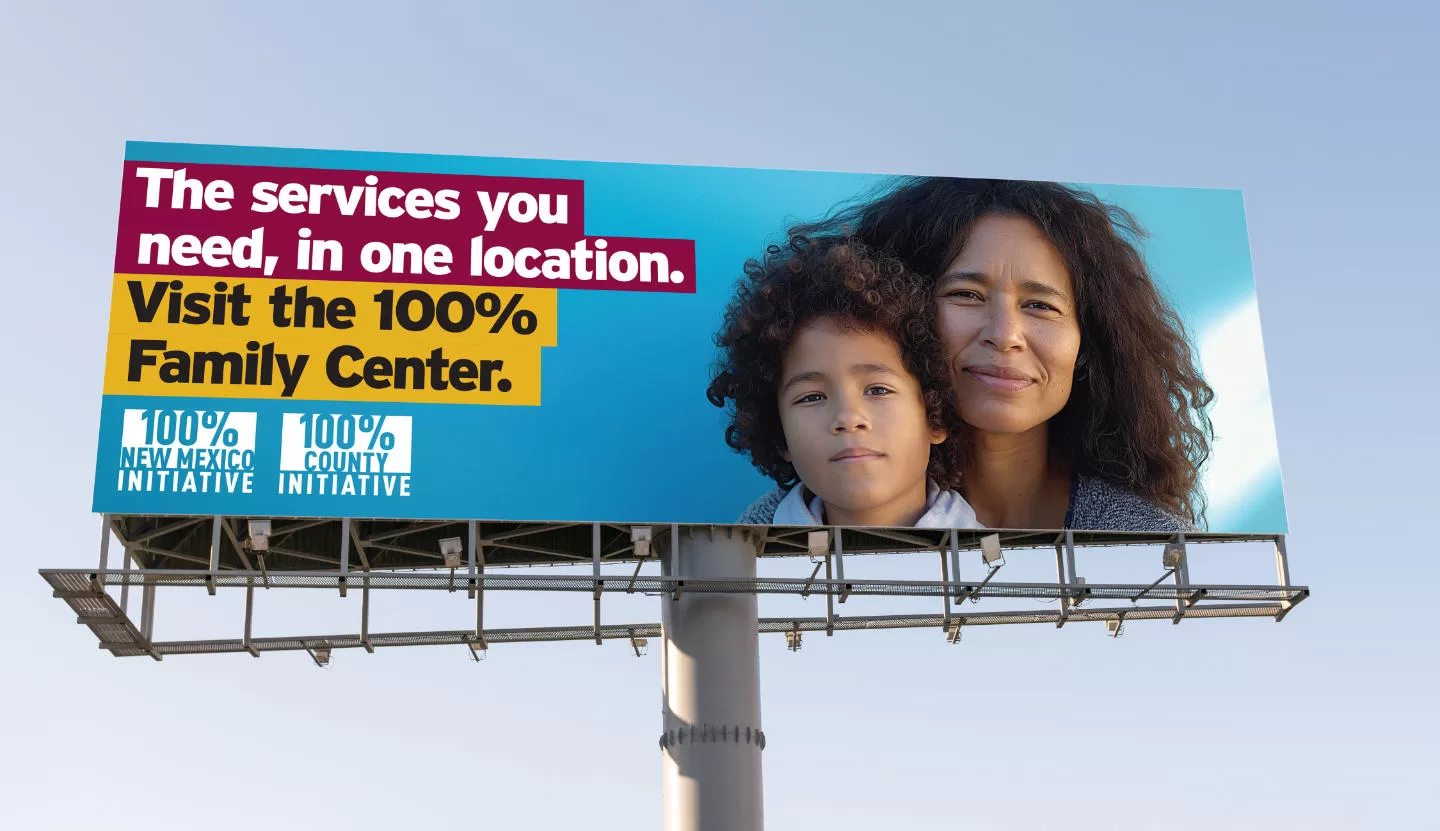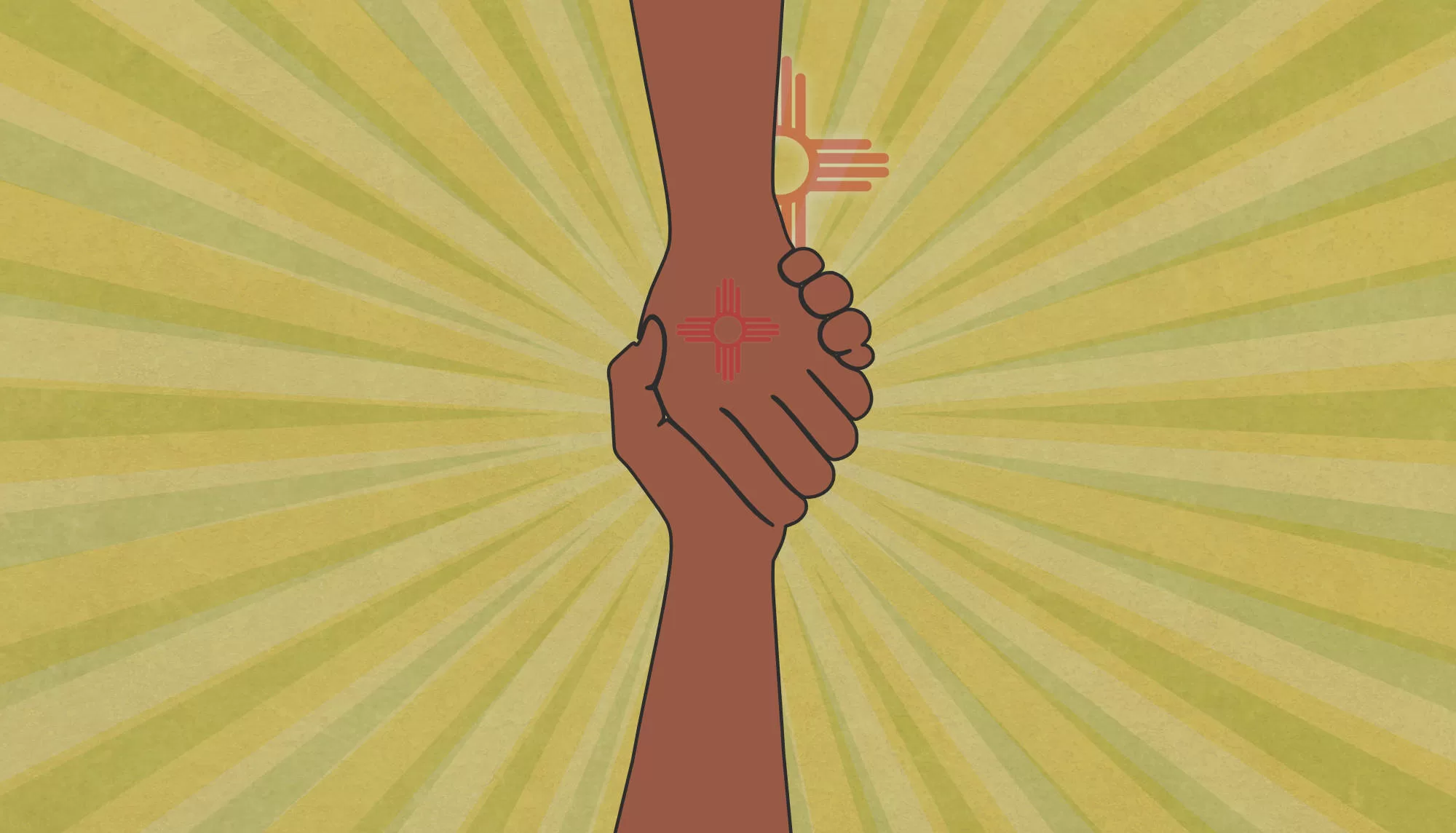Giving Family Resource Centers Super Powers
Explore ten questions that illustrate how New Mexico is creating a model for Family Resource Centers including why it’s so important.
Katherine Ortega Courtney, PhD and Dominic Cappello, PhD
Question 1: What needs does a “traditional” Family Resource Center meet?
First, a Family Resource Center can come in many forms and can have many functions. Traditionally, Family Resource Centers or Parent Centers have focused on parent education and offering information on a wide variety of health, safety and education topics related to raising healthy children. They may have special training for moms with newborns, dads and teens, and caregiving grandparents. These are all very valuable services. However, if a parent arrives with needs other than parent workshops, such as food insecurity, medical care, behavioral healthcare, housing insecurity or even transportation challenges, the traditional family resource center might not be able to do much other than hand a stressed parent a brochure with numbers to call or websites to visit. That’s why a new model for Family Resource Centers is required today to meet a variety of urgent needs.
Question 2: What other services can be provided in a center?
In some centers, staff not only provide education but navigators to vital services who sit down with a parent to make appointments with healthcare providers that have a sliding fee scale, so cost is not a barrier. These navigators know their community services well and do their best to link visitors, including parents and their children, to the needed services: from walk-in counseling services to food pantries. Sometimes, navigators spend time helping a parent fill out the various forms to qualify for services, which can be confusing and exasperating since each service may have its unique forms to secure access to their service. Navigators are a vital component of a Family Resource Center but it must be stressed we can’t navigate parents to services that aren’t accessible.
Question 3: How do we know what needs parents have?
In New Mexico, we have the 100% New Mexico survey which is implemented across a county that has asked parents what needs they have. The list includes, but is not limited to: medical and dental care, behavioral healthcare, food security programs, housing security programs, transportation, parent support, early childhood learning, community schools, youth mentor programs, and job training. We also know that for those children, youth, and families involved with child welfare, the services of CASA (court-appointed special advocates) are needed. Families arrive at a center with diverse needs, from seeking job training and employment to addressing trauma and substance use disorders that can lead to abuse, neglect, injury, illness, and fatalities.
Question 4: What are the barriers to these services that parents encounter?
The survey reveals that barriers include cost, inability to qualify for services, unfriendly hours for working parents, long waiting times, lack of transportation to services, unsureness about accessing services, services not being known, services not being nearby, and lack of staff speaking one’s language.
Question 5: Why do these barriers exist?
First, the cost barrier exists because, for those parents working full time at minimum wage, there’s just no extra money at the end of the month to pay for services. Many times, the first service needed is a food pantry, as the paycheck doesn’t cover a month’s worth of food for the family. Behavioral healthcare and medical care can be very limited because of the long-standing workforce shortages in those fields. Each of the ten services we described has unique barriers, depending on the county, but luckily, they can be solved with the right resources.
Question 6: How could a new type of Family Resource Center address service barriers in their county?
As we mentioned, historically, family resource centers provided parenting courses and perhaps navigation to services (at least the services that exist locally where cost or waiting times are not barriers). A new type of Family Resource Center can have two functions: 1) link families to existing services onsite, online, or through the support of navigators; 2) grow and improve services, including a process of quality improvement to remove each barrier.
Question 7: What would a Family Resource Center look like to link families to existing services?
First, staff would have to identify which services existed in the county and if they removed the barriers of cost, long waiting times, unfriendly houses for working parents, and having to qualify. They would create a web-based service directory that was constantly updated so all center staff would know where to refer families. Staff would be able to say, “We refer families to services,” and know those services were accessible.
Second, the center would be set up to have web-based services using the telehealth model so parents could access various service providers, including healthcare providers that could offer web-based assessments and advice online.
Third, the center would have family-friendly hours for working parents so that it would be open evenings and weekends. It would also have an area for children to wait while parents access onsite or online services.
Question 8: How would center staff grow services and remove barriers?
This would require center staff to be trained on continuous quality improvement (CQI), a process used in the private sector to address workforce challenges. Within a Family Resource Center, it involves working with all the organizations that provide the various services and collaborating to remove barriers. Some barriers like “unfriendly hours” could be remedied at no cost. Some, like “long waiting times,” would require developing a “grow your own” program within the county to increase healthcare providers, social workers, and teachers to meet local needs. Fortunately, CQI is a clear process including assessing, planning, action, and evaluation that can be taught to all family servicing organizations, including Family Resource Center staff, empowering them to address service barriers.
Question 9: Is the idea of a center addressing service barriers new?
Yes, it’s very new. “Growing services” to meet parents’ needs is a very novel approach to ensuring healthy families. It is supported by half a century of research on the social determinants of health, which are the services that determine our health, safety, and overall quality of life. With services, children, students, and families all do better. The idea of making parents’ services available is called “operationalizing family services.”
Question 10: But are family resource centers worth the investment?
The return on investment can be profound. Our surveys show that for a third to half of parents, services are very challenging to reach. We also know the problems associated with lack of access to vital services, such as housing insecurity, food insecurity, lack of healthcare access, adverse childhood experiences, trauma, substance use disorders, low school achievement, and lack of job readiness. We also know that children and families often enter the child welfare system because of problems related to neglect, and these often stem from caring parents lacking access to the vital services for children to be healthy and safe. By providing our most vulnerable families with access to vital services, we can reduce family involvement with child protective services, law enforcement, and the courts. We can increase school achievement leading to job readiness.
In New Mexico, the process of investing in and experimenting with various models of Family Resource Centers, including those that address service barriers, is underway. The 100% New Mexico initiative has been training people on the need for using CQI to address service barriers and surveying parents to assess their need for services, the challenges accessing them, and specific barriers to fix.
NEXT STEPS
New Mexico’s leadership is investing in the Family Resource Center model. It merits our full support, including strengthening partnerships between the centers and higher education, workforce solution specialists, health councils, behavioral health coalitions, and innovators within the departments of health, education, early childhood learning and care, justice, higher education, and transportation. We have an opportunity to capitalize on the early investments in Family Resource Centers to support their success and sustainability. The Anna, Age Eight Institute is also engaged, supported by the state leaders, in facilitating focus groups and town halls with a focus on meeting parents’ needs. There is much to share as we collaborate and innovate across New Mexico.
Contact us to learn more about the Family Resource Centers, research on meeting needs, and New Mexico’s opportunities for operationalizing vital services for children, students, and families.
Did you know? Our transformational 100% New Mexico initiative is guided by web-based, self-paced courses provided free to all New Mexicans.

Don’t miss a blog post! Get notified!
The 100% New Mexico initiative is a program of the Anna, Age Eight Institute at New Mexico State University, College of Agricultural, Consumer and Environmental Sciences, Cooperative Extension Service. Contact: annaageeight@nmsu.edu or visit annaageeight.nmsu.edu to learn more.








